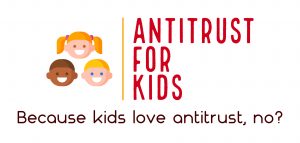Author: Steven Cernak
In the antitrust world in 2022, stories about Big Tech, government enforcement, and merger challenges dominated the headlines. But in putting together the 2023 edition of Antitrust in Distribution and Franchising (available for purchase soon!), I found a number of less-famous opinions that US distributors and their counsel should know. Just like last year at this time, I thought it made sense to share some of the research highlights. Below, I summarize opinions on important topics like Robinson-Patman, vertical price agreements, and locked-in consumers.
Robinson-Patman
Robinson-Patman’s Depression-era prohibition of some price and promotion discrimination has not been enforced by the federal antitrust authorities for decades — although, as we discussed recently, that might change soon. Even as government enforcement disappeared, private enforcement continued — again, as we have discussed before. Courts dealing with those private suits have been stingy, sometimes even hostile, in their interpretations of the law — once again, as we have discussed very recently. Two 2022 opinions continued those trends.
In Dahl Automotive Onalaska Inc. v. Ford Motor Co. (588 F.Supp. 3d 929, W.D. Wisc.), the defendant paid its dealers a portion of the MSRP of every vehicle sold so long as the dealer was building, or had built, a dealership exclusive to defendant’s brand. Plaintiffs were several small dealers who claimed the payments were harmful price or promotional allowance discrimination because other, larger, dealers sold more cars and so could recoup the cost of the exclusive dealership construction more quickly.
The court granted defendant’s Robinson Patman Act summary judgement motion. The court found that even if the payments allowed larger dealers to recover their construction costs more quickly, “it doesn’t mean that the payments result in price discrimination” because the promised payments merely allowed the dealers to recoup their cost of construction already incurred. Therefore, plaintiffs’ Section 2(a) claim failed. The court also found that the payments were not for “promotional allowances” because the dealership building did not resemble “advertising-related perks.” The court agreed with prior courts that had “concluded that buildings where sales occurred were not promotional facilities.” Therefore, plaintiffs’ Section 2(d) claim failed.
In In re Bookends & Beginnings LLC (2022 U.S. Dist. LEXIS 152596, S.D.N.Y.), plaintiff independent booksellers claimed that major publishers and Amazon violated various laws, including Robinson-Patman Section 2(a), when the publishers granted Amazon a larger discount than it granted plaintiffs. The magistrate judge recommended granting defendants’ motion to dismiss this claim because the Morton Salt inference of competitive injury was inappropriate when the actual discount to Amazon was not known or alleged and there was no other factual support for the complaint’s “conclusory allegation” that the discount was “steep,” “huge,” or “substantial.
Vertical Price Agreements and Retailer Cartels
As we have discussed on the blog, the Leegin case changed the evaluation of vertical price agreements under federal antitrust law from per se illegality to a rule of reason analysis. But while the Court found that such agreements were not always anticompetitive, it did discuss some situations when they might be anticompetitive: For example, when “there is evidence retailers were the impetus for a vertical price restraint, there is a greater likelihood that the restraint facilitates a retailer cartel.” The Court also expressed concern if the restraint were imposed by a manufacturer or retailer with market power.
In Davitashvilli, et. al. v. GrubHub Inc. (2022 U.S. Dist. LEXIS 58974 S.D. N.Y.), purported classes of restaurant customers survived a motion to dismiss their claims that defendants, three of the most popular online platforms for meal deliveries, harmed competition through vertical price agreements. The three defendants require the restaurants whose meals they deliver to charge the same price to customers using defendants’ services as those customers dining in and/or using a competitive delivery service. Plaintiffs likened defendants to the retailers and the restaurants to the manufacturers in Leegin, a comparison the court found “somewhat strained” but “plausible.” Because of the alleged market power of each or all of the defendants, plaintiffs plausibly claimed that the restaurants were forced to work through defendants and raise their prices to the purported classes of diners to recoup some of their additional costs.
Market Power Over Locked-In Customers
In the Supreme Court’s classic tying case, Kodak, the defendant required purchasers of replacement parts for its copiers to also purchase copier service from it. Because defendant often was the only seller of those parts, plaintiffs claimed that defendant had market power sufficient to force customers to accept this tie. Defendant, and the Court’s dissent, argued that defendant could not have power in the aftermarket for parts for its copiers because it had no power in the foremarket for copiers. The Court’s majority responded that defendant could have market power over that subset of its customers who were “locked in” to defendant’s copiers, perhaps because they purchased a copier before defendant adopted its tying policy and because switching to a different copier was costly. As a result, defendant’s summary judgment motion in Kodak was denied.
 The Antitrust Attorney Blog
The Antitrust Attorney Blog










